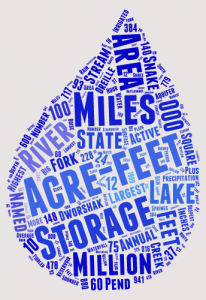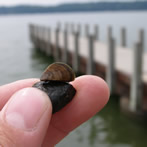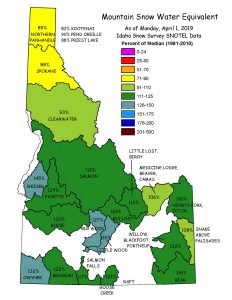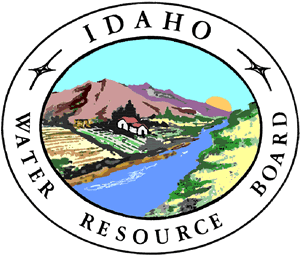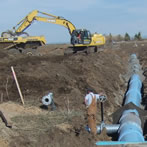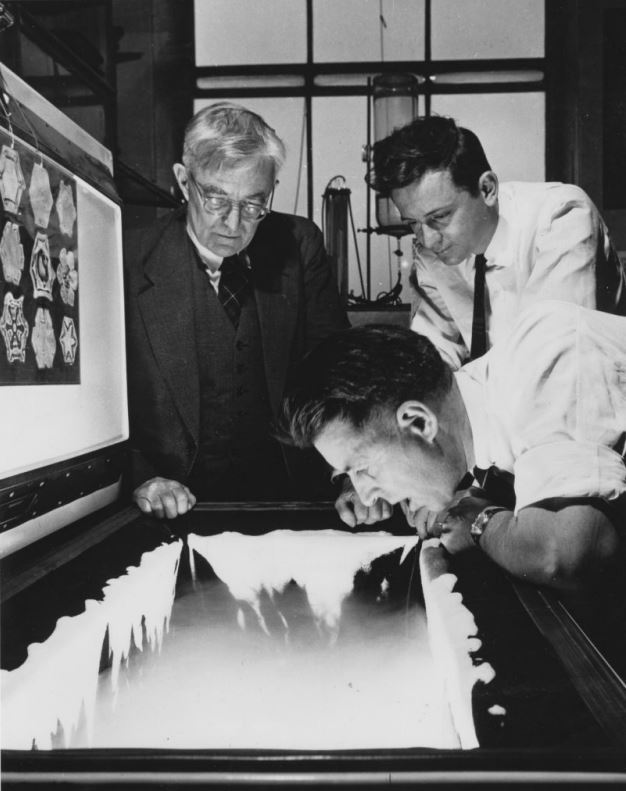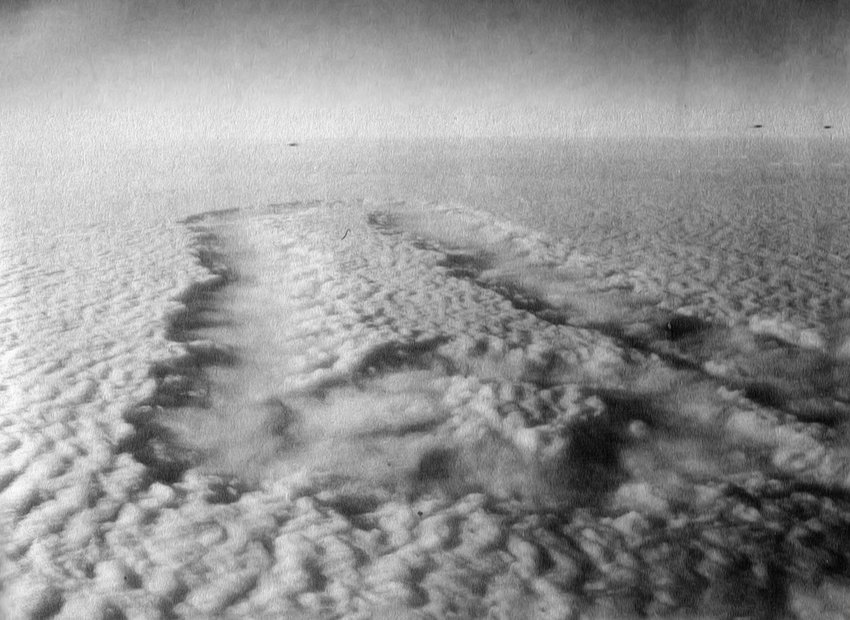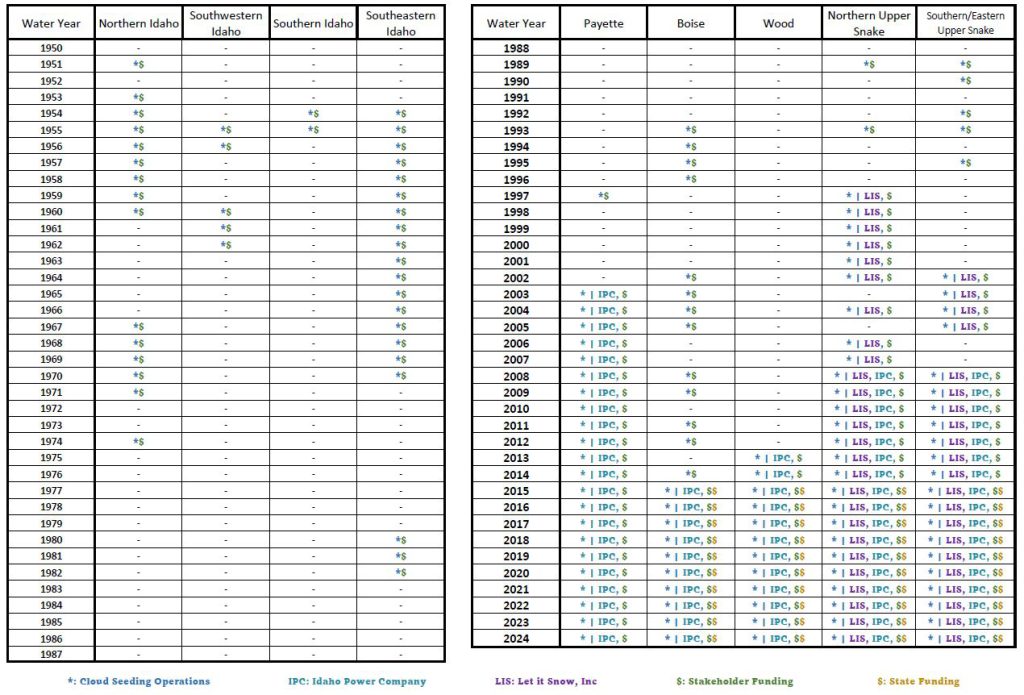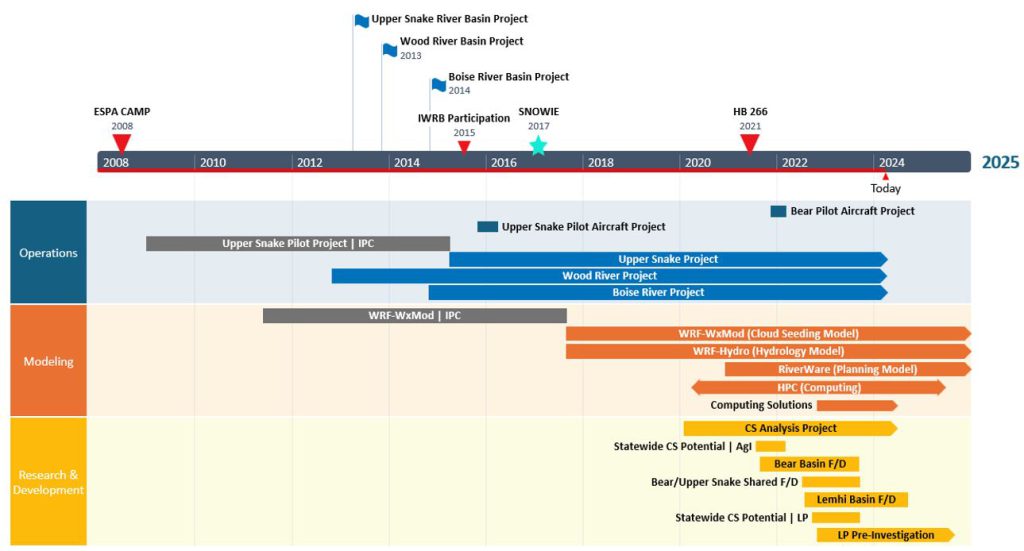Origins of Cloud Seeding
Discovery of Cloud Seeding (1946)
The proof of concept was first discovered by Vincent J Schaefer, Bernard Vonnegut, and Irving Langmuir in 1946. Schaefer and Langmuir were researching icing on aircraft at the General Electric Company’s research laboratory after World War 2.
By investigating the production of particles of various sizes and their behavior in the atmosphere, they discovered that tiny particles could be used to produce ice. They were able to nucleate ice by introducing small particles in a laboratory made cloud in a freezer with dry ice to create snow. Vonnegut later discovered that silver iodide (AgI) was an even more effective at generating ice formations- a breakthrough discovery for operational cloud seeding.
First Cloud Seeding Experiment (1947)
The first cloud seeding experiment called “Project Cirrus” happened in 1947. A modified B17 bomber dropped dry ice (solid carbon dioxide) into a stratus cumulus cloud. This experiment proved successful when they witnessed a “Racetrack” form in the cloud deck where the plane has seeded. This was evidence that ice was produced and that cloud physics and precipitation could be altered.
References: The role of induced entrainment in past stratiform cloud seeding experiments (Walcek)
History of Cloud Seeding in Idaho
Cloud seeding operations have been occurring in various parts of Idaho since the early 1950’s. Earlier programs were locally sponsored, manually operated ground seeding projects. More consistent operations began in the late 1990’s with the development of the High Country Resource Conservation & Development’s (HCRCD) East Idaho program, operated by Let it Snow (LIS). This program is currently the longest operational program in the State of Idaho. Idaho Power Company (IPC), in response to a shareholder questions, also began investigating cloud seeding in the late 1990’s to support its hydropower generation. IPC began its first operational project in the Payette River Basin in 2003. Prior to IPC’s cloud seeding efforts, the Boise Board of Control contracted with the North American Weather Modification Company (NAWC) for the operations of manual ground generators in the Boise River Basin for over a decade.
Table 1. Table of all historical cloud seeding operations in Idaho
History of the Collaborative Cloud Seeding Program
The Idaho Water Resource Board (IWRB) began investigating cloud seeding in 2008 as a water management strategy to support the Eastern Snake Plain Aquifer (ESPA) Comprehensive Aquifer Management Plan (CAMP). As a part of the CAMP planning process, IPC proposed to develop and operate a 5-year pilot project in the Upper Snake River Basin, and if successful, the State and local water users would come to the table to discuss collaboration for the long-term operation of a program. Following success of the pilot project, operations were expanded to include the Boise and Wood basins at the request of water users in the basins.
In 2015, IPC approached the IWRB about partnering for the build out of a full scale program. The IWRB’s initial investment was for capital expenses to build out program infrastructure. Recognizing the importance of validation and long term monitoring and analysis, the IWRB shifted its investments into cloud seeding to focus on the development of modeling and computing technologies to support cloud seeding operations, planning and design of projects, and ultimately program evaluation and long term analysis. The Collaborative Cloud Seeding Program has continued to evolve, and currently exists as a partnership between IWRB, IPC, and local water users for the long term operation of precipitation enhancement. A full timeline of the Collaborative Cloud Seeding Program is shown below.
Figure 1. Timeline of the Collaborative Cloud Seeding Program
- 2008 | ESPA CAMP implementation of a 5-year pilot project in the Upper Snake Basin; Operations and Funding by IPC
- 2013-2014 | Water users in the Wood and Boise River Basins approached IPC about the potential for developing new projects
- 2015 | IWRB provided cost share with IPC and began participation in program funding with capital for new infrastructure
- 2016 | IWRB began contributing towards program operations and modeling (1/3 total program cost)
- 2017 | IWRB Partnered with IPC for development of Weather Research and Forecasting Cloud Seeding model (WRF-WxMod)
- 2017 | SNOWIE study field campaign in the Payette River Basin
- 2019 |Program reached existing build-out (3 aircraft, 57 remote generators, network of weather instrumentation) and initiated cloud seeding analysis
- 2019 | IWRB directed staff to conduct an analysis of cloud seeding (CS) operations (CS Analysis)
- 2020 | Initial results of the CS Analysis; IWRB directed staff to conduct a more detailed investigation, utilizing sophisticated modeling tools
- 2021 | Legislature passed House Bill 266 (HB266) on cloud seeding
Directed the IWRB to:- Continue cloud seeding analysis
- Complete an assessment of cloud seeding opportunities statewide
- Authorize cloud seeding programs in State
- Provides authority to sponsor or develop local or statewide cloud seeding programs
- 2021 | IWRB directed staff to conduct: a more detailed cloud seeding analysis; a statewide cloud seeding assessment; and a feasibility and design study of the Bear River Basin
- 2021 | Bear River Basin Pilot Aircraft project
- 2022 | Statewide assessment results using silver iodide (AgI) presented to IWRB CS Committee
- 2022 | IWRB directed staff to conduct feasibility and design study of the Lemhi River Basin


